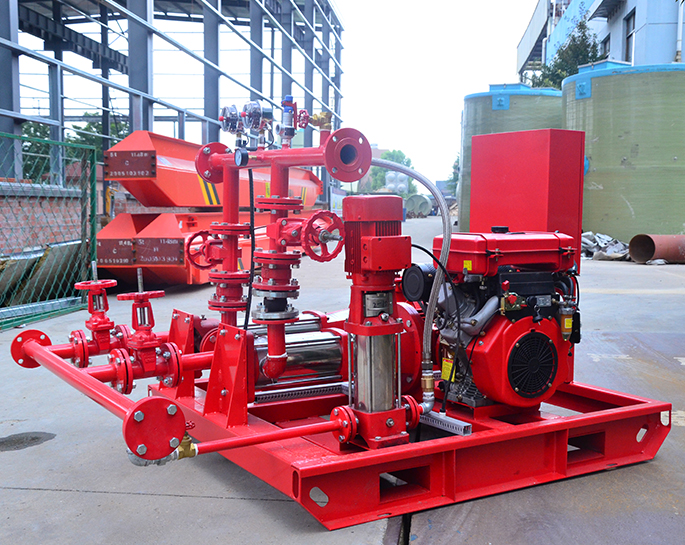How a Fire Pump Works
May 22, 2023
Share:
A fire pump is an important piece of equipment in a fire protection system. It’s responsible for pumping water from a water source to its destination, such as a sprinkler system or a standpipe. Fire pumps provide a large volume of water that is much more powerful than the water pressure that is available from a fire hydrant.
Fire pumps typically consist of a motor, either an electric motor or a diesel powered engine, that turns a centrifugal pump. It takes in water, electrically or mechanically boosts its pressure, and transports it to the destination. Additionally, the motor will be equipped with a clutch mechanism and pressure regulating valves for ensuring proper water flow rates.
After the water is taken in, the electric or diesel powered motor starts to rotate the pump element, which then creates a vacuum that helps suck in the water at a specified flow rate. This then passes through the impeller of the fire pump, which spins the water in a single direction. This will increase the pressure of the water, forcing it out of the other end of the pump.
The pressure that is generated by the fire pump is determined by how quickly the impeller is spinning. The speed of the impeller can be adjusted to reach different levels of pressure, allowing the pump to provide the correct pressure needed for the destination. In addition, the amount of water that is released is also regulated by the pressure.
It is important to ensure that the fire pump is inspected and maintained regularly. This is because the pump needs to be able to operate efficiently in order to provide the water pressure needed for firefighting. Regular maintenance will also help ensure that any safety features, such as the clutch and pressure regulating valves, are functioning properly.

Fire pumps typically consist of a motor, either an electric motor or a diesel powered engine, that turns a centrifugal pump. It takes in water, electrically or mechanically boosts its pressure, and transports it to the destination. Additionally, the motor will be equipped with a clutch mechanism and pressure regulating valves for ensuring proper water flow rates.
After the water is taken in, the electric or diesel powered motor starts to rotate the pump element, which then creates a vacuum that helps suck in the water at a specified flow rate. This then passes through the impeller of the fire pump, which spins the water in a single direction. This will increase the pressure of the water, forcing it out of the other end of the pump.
The pressure that is generated by the fire pump is determined by how quickly the impeller is spinning. The speed of the impeller can be adjusted to reach different levels of pressure, allowing the pump to provide the correct pressure needed for the destination. In addition, the amount of water that is released is also regulated by the pressure.
It is important to ensure that the fire pump is inspected and maintained regularly. This is because the pump needs to be able to operate efficiently in order to provide the water pressure needed for firefighting. Regular maintenance will also help ensure that any safety features, such as the clutch and pressure regulating valves, are functioning properly.







